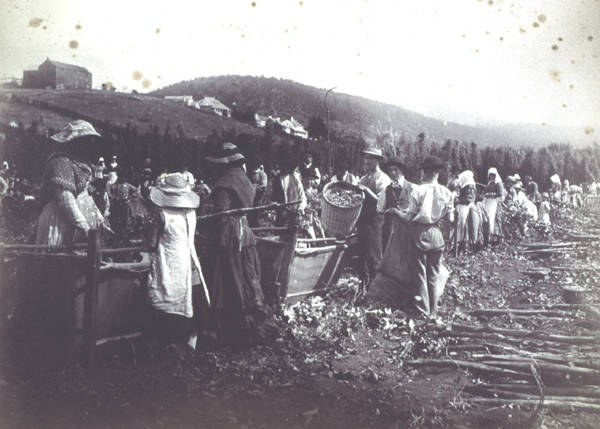 |
 |
|
Hops
Hops were first planted by Colonel Paterson in his garden at Port Dalrymple in 1804.1 The rise of local breweries and a suitable climate for growing hops stimulated commercial hop production from the 1820s.2 In 1822 William Shoobridge established Tasmania's first successful plantation at Providence Valley (North Hobart).3 Successive generations of the Shoobridge family built up a farming empire in the Derwent Valley, which by the 1840s had become Tasmania's premier hop growing region.4 By the 1870s there was a stable industry supplying mainland as well as local markets. Improvements were made in the methods of hop culture, irrigation and oasthouse construction and by the end of the nineteenth century production had expanded, with varied success, to several other locations including the Tamar and Mersey Valleys in the north, Little Swanport on the east coast, and the Huon Valley, Glenorchy, Margate and Kingston in the south.5 Hop picking provided seasonal income for thousands of men, women and their families during the harvest time. During the depression years of the 1920s and 1930s overproduction led to a crisis in the industry, resulting in a drop in acreage and the loss of many smaller producers. Hop factors (agents), such as Henry Jones and Co., gained greater control.6 Following a period of consolidation and recovery from the 1940s to the 1960s, hop production was expanded to Scottsdale and Gunns Plains in the north. The late twentieth century also saw the introduction of new high-yielding varieties and mechanical harvesting. Further reading: K. Evans, Hop industry historical research project 1-3, Hobart 1993: H. Pearce, The hop industry in Australia, Melbourne, 1976. Kathryn Evans Footnotes: |
Copyright 2006, Centre for Tasmanian Historical Studies |
